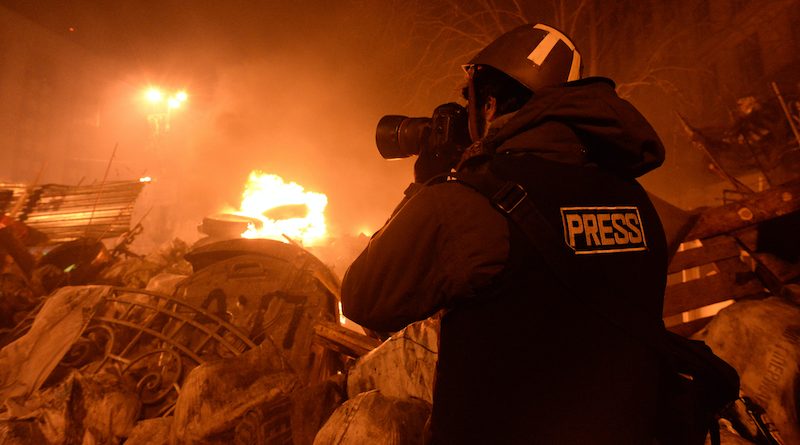An analysis of Ukraine’s information strategy
By Alec Dionne, MALD 2023 Candidate, The Fletcher School
Russia’s invasion of Ukraine was accompanied by an explosion of public sympathy in Western Europe and the United States. Expressed broadly across social media, the level of public reactions and response from Western policymakers stands out as unique in comparison to other military interventions of the past decade. Ukraine has created a specific information strategy towards NATO designed to target the general public to influence elite policymakers. As a result, the NATO countries have raised over $10 billion in military aid, along with billions in private donations and over 20,000 foreign fighters.
Traditional Western information strategies, codified in the 20th century, are built around leveraging print publications and corporate news media to disseminate facts with a limited state narrative. In practice, information strategy among NATO states varies along a spectrum: from banal public information on one end, to politicized mal-information, or accurate information released for targeted political ends, on the other. Beyond misinformation on this spectrum sit disinformation, misinformation, and heavy control of information flows. Every country occupies a range on this spectrum as they employ myriad tactics to build narratives and national myths. Norms and cultural values push the West to focus its efforts on activities spanning the range of public information to misinformation, while generally forgoing misinformation and disinformation.
Since the start of the war, Ukraine has shifted its resting point on this spectrum. Attempting to leverage its position as the victim of an unjust invasion, Ukraine released an information campaign designed to effect popular sympathies in the United States and Europe to drive elite decision-making. This centers Ukrainian strategy firmly in the camp of mal-information, and away from public information. Mal-information, despite its connotations, is not always unethical. The Ukrainian government’s publicization of Russian war crimes, for example, is both factually accurate and fulfills the government’s obligation to advocate for its citizens’ wellbeing. This, however, does not negate the fact that these information operations are intentional, strategic, and come with definable political goals.
During the invasion’s opening weeks, Ukraine’s official English language Twitter, already using a casual tone prewar, went on a verbal offensive, taking a defiant and hyper-patriotic tone. The Ministry of Defense (MOD)’s account, then conducted in Ukrainian, took a sober and nationalistic tone, with posts that lionized Ukrainian servicemembers, displayed Russian losses, and provided safety updates to the public. The bifurcation of these two suggests intentional targeting of audiences: the official account was for Western observers, while MOD was for Ukrainian morale. At first glance, nasty words from a Twitter account can be written off as an angry keyboard warrior, yet this action has had real effects on Ukraine’s ability to prosecute the war. After early success, Ukraine shifted its strategy to be weighted externally, with the MOD account changing to all English language posts in early June. These English language accounts deprioritize public information on the war, and serve to remind NATO’s voters why they support Ukraine. The accounts regularly remind the audience that an attack on Ukraine is an attack on the broader European project, at one point merely tweeting a list of values held dear by the international order, “freedom…human rights, rule of law…equality, freedom of speech, peaceful protest, transparency, accountability, religious freedom… *shortlist of what we stand for.”
Ukraine’s end goal is to keep a political imperative in NATO’s liberal democracies. High-popularity issues cannot be ignored by elected politicians. Even in the United States, where incumbency advantages shield most lawmakers from public opinion, protecting Ukraine is a rare point of unity. As a result, Ukraine is targeting the hearts and minds of the U.S. and European public to keep itself popular. Ukraine’s political elite are undertaking their campaign to sway Western policymakers, but by making their cause a political reality, they ensure continued Western aid. Elite policymakers being motivated by Ukrainian public messaging is ancillary to the primary goal. What ensures continued support for the Ukrainian war effort is the general public seeing support for Ukraine as a political imperative.

